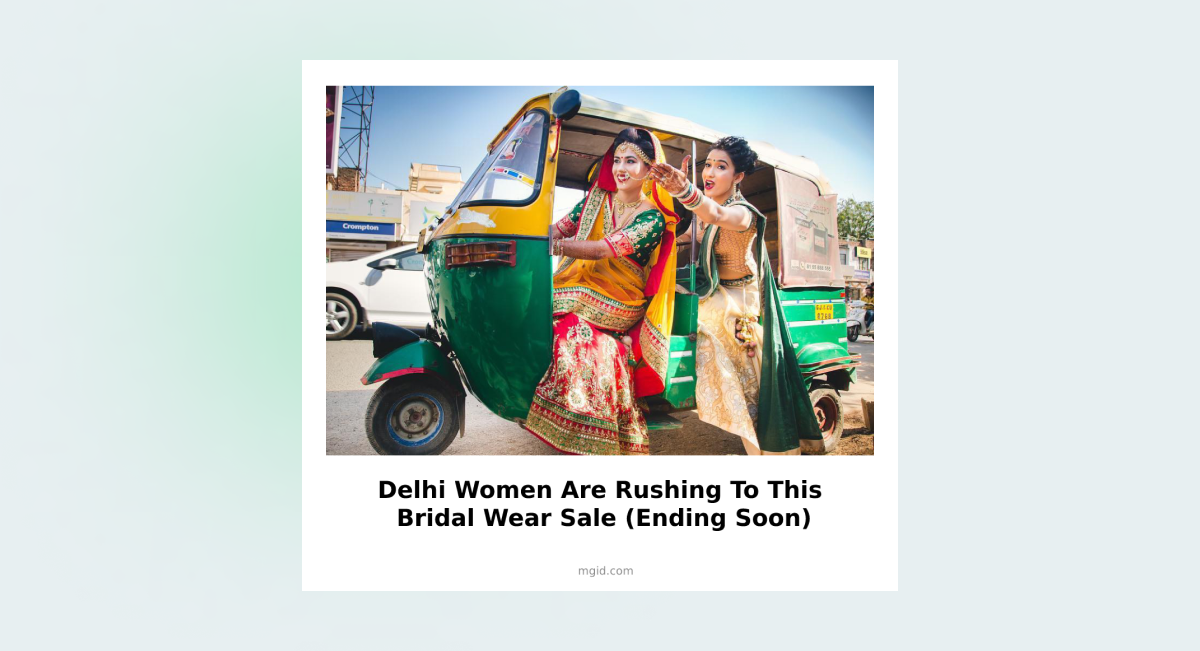Editor’s note: This article includes examples of ad creatives launched by advertisers on MGID. All rights reserved.
How do you go about writing ad creative titles for your advertising campaigns? If you’re an advertiser making promises you can’t keep, our creative and compliance experts here at MGID will help you discover alternative approaches to curate a relevant and click-worthy title.
Here is a what to expect in this article:
- Understand why you should resist making tall claims in your ad titles
- Get a creative refresh for writing your ad titles
- See real-life examples & high-converting ad titles
The bottom line is, we will examine the creative solutions that can greatly improve CTR and also lead to higher conversion rates.
Why Should Brands Avoid Making Big Claims?

You may sometimes find yourself creating clickbait-y, buzzworthy and entertaining ad titles for your marketing campaigns. It's natural to want people to click on your ad. The problem is doing so isn’t worth much.
After all, you want sales and conversions, not clicks. Writing tall claims for your ad title could backtrack your business by months while meeting customer expectations will result in positive ROI and tangible results.
So the first thing you should learn from this article is always keep your ad relevant.
This increases trust and credibility for your brand. Without relevancy, you risk getting flagged or even called out by publishers. Furthermore, users may question the advertiser’s integrity, resulting in them choosing not to view the ad at all.
Here's what we mean by exaggerated at titles:

The Impact of Exaggerating Ad Titles
As we have already mentioned above, there are numerous negative impacts that exaggerated ad titles can have on a brand.
Let’s dive deeper into these:
- Damaged Consumer Trust. If a brand has a habit of overpromising and exaggerating, consumers notice it. This usually results in the user being less likely to engage with the brand in the future.
- Poor User Experience. It can be disappointing when a consumer learns that a product or service doesn’t live up to its claims in the ad. The user might feel misled and are likely to voice their experience with others, resulting in a damaged reputation for the brand.
- Ad Blocking. Exaggerated ad titles tend to result in negative outcomes for advertising campaigns, as they can be blocked or reported as spam. This can lead to complicated legal issues, so ensure you stay compliant with good taste. Our Creative and Compliance Department at MGID are experts in this field and help advertisers refresh campaigns for relevancy and efficacy.
- A Note on Ad Fatigue. Oversaturation of the exaggeration approach can lead to ad fatigue, so be mindful of your headlines. Ads may have fooled people in the past, but now, consumers are more aware when they are viewing an advertisement.
So, how do you avoid these negative effects? You need to find the right balance between writing catchy headlines and meeting customer expectations. Which brings us to the next section of this article…
How to Make Your Ad Creative Catchy and Relevant?
You can adopt various creative approaches to keep your ad relevant – yet effective. Break away from bad overpromising habits.
Here are some ways to both encourage users to click through your content and give them a better experience:
Use Urgency

Good ol’ FOMO (or the fear of missing out) works really well to create a sense of urgency and spark curiosity in potential consumers. The proven marketing tactic has saved so many businesses: it’s hard to place it anywhere but at the top of the list of our creative approaches.
Words and phrases such as “hurry,” “won’t last long,” and “limited time only” may sound cliché to you, but they actually work. There’s nothing more effective than marketing strategies rooted in basic human psychology.
Leverage Curiosity

The above ad is a great example of the curiosity method. As you can see, it's transparent while adding a little mystery. People are naturally curious, so if you give them a hint at what your content is about, they’ll want to see and learn more.
Ask Questions

Users respond well to questions. This is a great technique to adopt because when you ask the right question, the reader will want to know the answer. Also, people like to be seen and acknowledged, so when you ask them questions, they feel important. We can also use questions for relevancy and relatability so the reader feels you understand them and care.
Take the time to craft an engaging question like the ad creative shown above.
Share a Story

Stories are a timeless way to connect emotionally with a listener or reader. Tell your customer’s story, not your brand’s. Make your target audience the main hero of your story and keep your brand behind the scenes. Picture your product as the tool that helps your customer overcome their pain points.
Consider the ad headline shown above as an example; one sentence is really enough to hook people or tell a story.
Draw from Current Topics & Trends

With such a fast-changing world, it makes sense that we stay relevant in our marketing. Trends are changing quickly, and to appeal to users, you’ll want to ensure you’re catching their interest with current trends.
This way, they feel like you are speaking their language: the strategy also applies to seasonal marketing and marketing that is geared to a specific holiday. These topics are top of mind at certain times of the year, allowing advertisers to stay relatively competitive.
Play the Numbers Game

Numbers tend to stand out in the flood of text, as users are drawn to numbers. Statistics, prices, facts and numerals (as opposed to numbers spelled out) work well enticing users and catching their interest.
Take inspiration from the above example. The reason it is so effective is because it understands the user’s interests. For most consumers, when they are interested in a product, the first question they ask is, “What is the cost?” The ad title answers just that.
5 DOs & DONTs for Ad Titles
Be mindful of these best practices when implementing the strategies above.
#1: Use Conditional Words

Words like “may,” “might,” and “could” will make a headline sound much more realistic as opposed to a false promise with the word “will.” This way, you are not making any guarantees you can’t keep.
#2: Use General Terms When Mentioning Time

If you use a specific time period in an ad, the user will expect results within that period. Instead of claiming results with your product or service in a definitive number of days, use words like “faster” and “quicker.”
#3: Don’t Promise Miracles

Don’t promise the moon. For instance, avoid using the words “magic” and “miracle” and opt for more realistic words. Words like “method” and “strategy” are great alternatives.
#4: Use Third-Person Perspective

Indirect speech and third person perspective gives the impression that the content is validated by other peers. This will invoke a sense of belonging and curiosity, encouraging the user to learn more.
#5: Less is Better With Numbers

Of course, be realistic when using numbers in your headlines. Promising someone they can lose an implausible amount of weight without lifestyle changes is an old and worn-out strategy that no longer works.
Bottom line
It’s true that a great thumbnail image is what catches the user’s attention first, but the headline is ultimately what drives the user to click. A user only looks at an ad for approximately three seconds, and the headline will be what determines if they act.
Well-crafted ad titles play a crucial role in the success of native ad campaigns and help advertisers reach their marketing goals. So, feel free to use these creative approaches and may your high CTR be accompanied with respectively high sales and conversions!
So, feel free to use these creative approaches and may your high CTR be accompanied with respectively high sales and conversions!





